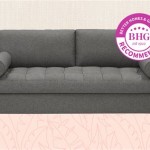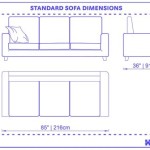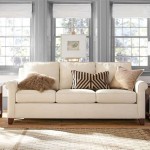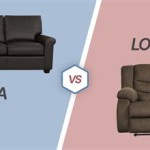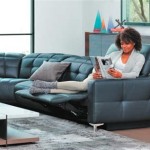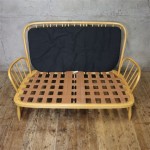What Is The Best Fabric To Reupholster A Sofa?
Reupholstering a sofa is a cost-effective way to revitalize a piece of furniture, giving it a new lease on life and updating its aesthetic to better match current decor. However, the success of any reupholstery project hinges significantly on the fabric chosen. The "best" fabric isn't a universal concept; it depends heavily on the individual's lifestyle, budget, aesthetic preferences, and the sofa's intended use. A fabric ideal for a formal living room might be entirely unsuitable for a family room frequented by children and pets. This article delves into various fabric types, their characteristics, and factors to consider when selecting the optimal material for sofa reupholstery.
Selecting the appropriate fabric involves balancing durability, aesthetics, comfort, and maintainability. A visually stunning fabric that deteriorates quickly or is difficult to clean will ultimately prove unsatisfactory. Conversely, a highly durable but unattractive fabric may detract from the overall design and ambiance of the room. Careful consideration of these factors is paramount to achieving a successful and long-lasting reupholstery project.
Understanding Fabric Durability and Performance
Durability is a crucial factor, especially for sofas in high-traffic areas. The durability of a fabric is often measured using the Wyzenbeek test and the Martindale test. The Wyzenbeek test involves repeatedly rubbing a fabric back and forth with a piece of cotton duck until it shows wear. The number of "double rubs" the fabric can withstand before showing significant wear is its Wyzenbeek rating. For residential use, fabrics with a Wyzenbeek rating of 15,000 double rubs or more are typically recommended for light use, while fabrics with 30,000 double rubs or more are suitable for heavy use. The Martindale test is similar but uses a different rubbing motion and assesses wear on a higher number scale. A Martindale rating of 20,000 cycles or more is generally considered suitable for residential use, while 40,000 cycles or more are recommended for heavy use or commercial applications.
Beyond abrasion resistance, consider the fabric's resistance to fading, staining, and pilling. Fabrics exposed to direct sunlight should be resistant to UV degradation to prevent fading and weakening of the fibers. Fabrics intended for sofas used by children or pets should be stain-resistant, either naturally or through the application of a stain-resistant finish. Pilling, the formation of small balls of fiber on the fabric's surface, can detract from its appearance and should be considered, especially with certain synthetic fabrics.
The fiber content significantly impacts durability. Natural fibers like linen and cotton, while aesthetically pleasing and comfortable, may not be as durable as synthetic fibers like polyester or acrylic. Blends of natural and synthetic fibers often offer a good compromise, combining the comfort and appearance of natural fibers with the durability and stain resistance of synthetic fibers. For example, a cotton-polyester blend may be more durable and easier to clean than pure cotton.
Exploring Different Fabric Types and Their Suitability
Various fabric types are available for sofa reupholstery, each with its distinct characteristics and advantages. Understanding these differences is essential for selecting the most suitable fabric for a specific project. Here's an overview of some common options:
Cotton: Cotton is a natural fiber known for its softness, breathability, and affordability. It is available in a wide range of colors and patterns, making it a versatile choice for various decorating styles. However, cotton is prone to staining, fading, and wrinkling, and it is not as durable as other fabrics. Opting for a cotton blend, such as cotton-polyester, can improve its durability and stain resistance.
Linen: Linen is another natural fiber that offers a sophisticated and luxurious look. It is highly breathable and relatively strong but is prone to wrinkling and staining. Linen is often used in more formal settings or in homes with minimal traffic. Pre-treating linen with a stain repellent can help protect it from spills and stains.
Wool: Wool is a durable and naturally stain-resistant fiber that is also resistant to fire. It provides excellent insulation, making it a comfortable choice for both warm and cold climates. Wool can be expensive, but its longevity and performance often justify the cost. Wool blends can offer a more affordable alternative while retaining some of the benefits of pure wool.
Leather: Leather is a luxurious and durable option that adds a sophisticated touch to any sofa. It is naturally water-resistant and relatively easy to clean. However, leather can be expensive and may require special care to maintain its suppleness. Different types of leather, such as top-grain, full-grain, and bonded leather, offer varying levels of quality and durability. Full-grain leather is the highest quality and most durable, while bonded leather is a more affordable but less durable option.
Polyester: Polyester is a synthetic fiber known for its durability, stain resistance, and affordability. It is resistant to fading and wrinkling and is available in a wide range of colors and textures. Polyester is a popular choice for sofas in high-traffic areas or in homes with children and pets. Microfiber, a type of polyester, is particularly soft and durable.
Acrylic: Acrylic is another synthetic fiber that is similar to wool in its appearance and feel. It is resistant to fading, staining, and mildew, making it a good choice for outdoor or indoor settings. Acrylic is often used in blends with other fibers to improve their durability and performance.
Olefin: Olefin is a synthetic fiber known for its exceptional durability, stain resistance, and resistance to mildew. It is often used in outdoor furniture but can also be a good choice for sofas in high-traffic areas or in homes with pets. Olefin is relatively inexpensive and easy to clean.
Considering Lifestyle, Aesthetics, and Budget
Beyond the technical aspects of fabric durability and performance, it is essential to consider lifestyle factors, aesthetic preferences, and budget constraints. A household with young children or pets will have different fabric requirements than a household with adults only. Similarly, the desired aesthetic of the room will influence the choice of fabric type, color, and pattern.
For families with young children or pets, durability and stain resistance are paramount. Fabrics like polyester, olefin, and microfiber are excellent choices due to their ability to withstand heavy use and resist stains. Darker colors and patterns can also help to conceal dirt and stains. Consider fabrics with a tight weave to minimize snagging from pet claws. Regularly cleaning and maintaining the fabric, regardless of its stain resistance, is also important.
The desired aesthetic of the room should also play a significant role in fabric selection. For a formal living room, luxurious fabrics like velvet, silk, or linen might be appropriate. For a more casual family room, durable and comfortable fabrics like cotton, polyester, or microfiber are better choices. Consider the existing color scheme and decor of the room when choosing a fabric color and pattern. Neutral colors are versatile and can easily be incorporated into various decorating styles, while bolder colors and patterns can add personality and visual interest.
Budget is another important consideration. Fabric prices can vary widely, depending on the fiber content, weave, and design. Natural fibers like silk and leather are typically more expensive than synthetic fibers like polyester and acrylic. It is essential to set a budget before starting the reupholstery project and to shop around for the best prices. Consider purchasing fabric online or from discount retailers to save money. Remember to factor in the cost of labor for the reupholstery process itself.
Considering all these factors - durability, fabric type, lifestyle, aesthetics and budget - will significantly aid in selecting the most suitable fabric. Selecting the right fabric is a critical element in ensuring the longevity, beauty, and comfort of a reupholstered sofa, creating a piece of furniture that complements both personal style and practical needs.

Best Fabrics For Sofas The Inside

Do It Yourself Divas Diy Strip Fabric From A Couch And Reupholster

Choosing The Best Upholstery Material Ian Mankin

How To Choose The Best Upholstery Fabric For Sofas

10 Best Sofa Material Types That Are Perfect For Every N Home

How To Choose The Best Upholstery Fabric For Your Sofa Rose And Grey

What Is Upholstery And How Do You Choose The Best Fabric For Your Sofa Architectural Digest

The Ultimate Guide To Upholstery Fabric For Sofas Linwood

How To Choose The Right Fabric For Reupholstering Furniture Erin Kestenbaum

Sofa Upholstery What Should You Know Before
Related Posts

